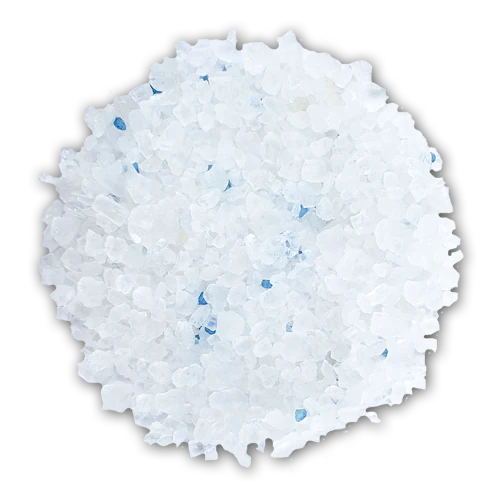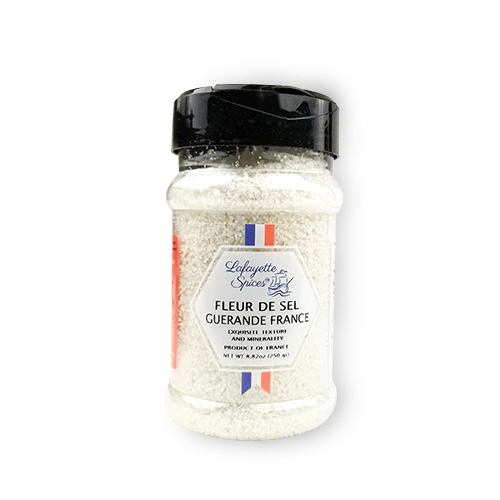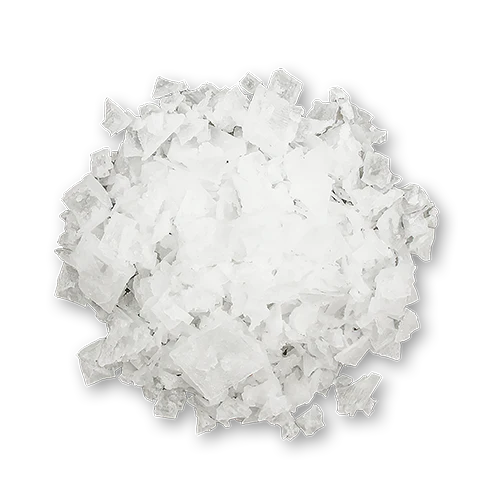
Discover Herbes de Provence Seasoning: Uses, Recipe, Substitute & Where to Buy
Herbes de Provence, the aromatic blend that can elevate your culinary creations.
Lafayette Spices doesn’t carry many dried herbs. In fact, we only carry one! So it’s really important that it’s incredibly delicious – something that makes a big splash! Enter - Herbes de Provence.
This flavor-packed herb blend comes straight from France and is going to make your roasted meats, vegetables, soups, and stews the talk of the town.
No seriously. You’re not going to believe the transformation that boring roasted chicken is going to take. Prepare to transport yourself to the south of France – bon voyage!
In this article, we'll delve into the diverse world of Herbes de Provence. Exploring its myriad uses in cooking and sharing a delectable recipe to tantalize your taste buds. Discussing substitutes for when you're in a pinch. And guide you on where to source this enchanting herb blend.
What is Herbes de Provence?

Let’s start with a little background on the Herbes de Provence blend…
This dried herbal mix hails from the Provence region of southeast France. The Lafayette Spices mix includes five herbs, each with its own distinct flavor profile and importance to the blend: Savory, Marjoram, Rosemary, Thyme, and Oregano. Each herb is picked at its absolute peak of flavor and slowly air-dried – this process achieves a flavor and color that is second to none.
The blend itself is considered to be one of the youngest herb mixtures in France – after staples like Bouquet Garni and Fines Herbes. The term has only been around since the ’70s and was popularized by Julia Child! The mixture itself can include many different iterations of herbs – and can be either fresh or dried. The blend can include thyme, marjoram, oregano, rosemary, basil, chervil, tarragon, lovage, savory, sage, bay leaf, and fennel. Some mixtures outside of France include Lavender because it was an excellent selling point to tourists who couldn’t picture a Provincial herb blend without it!
What does Herb of Provence taste like?
It typically includes a combination of dried herbs such as savory, marjoram, rosemary, thyme, and oregano. Although the exact composition may vary from one brand or recipe to another.
The flavor profile of Herbs of Provence is aromatic and savory with a combination of earthy, herbal, and slightly floral notes. Here's a breakdown of the individual herbs' flavors:
- Savory: Adds a mild, peppery, and slightly pungent taste.
- Marjoram: Provides a sweeter, milder oregano-like flavor.
- Rosemary: Imparts a piney, resinous, and slightly woody taste.
- Thyme: Offers a slightly minty, earthy, and lemony essence.
- Oregano: Contributes a robust, earthy, and slightly bitter flavor.
When these herbs are blended together, they create a harmonious versatile mix herbs. And can be used to season a variety of dishes. From roasted meats and vegetables to stews, soups, and even grilled foods.
The overall taste of Herbs of Provence is robust, fragrant, and adds a touch of the Mediterranean to your culinary creations.
Alrighty then, Spice Explorer! Ever wonder what spices are lurking in our culinary treasure chest? Well, get ready to embark on a flavor-filled journey! 🌶️🌍
Try New Flavors!! (Beyond the Basics) |
|||
|---|---|---|---|
| Crazy Salt |
Flavor: Salt, Herbs, and Spices Use: Raw Steaks, Chicken, Fish |
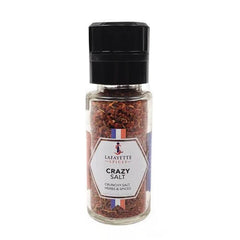 |
Order Now |
| Espelette Pepper Salt |
Flavor: Smoky Sweet Heat, Roasted Pepper Use: Grilled Meats, Seafood, Vegetables |
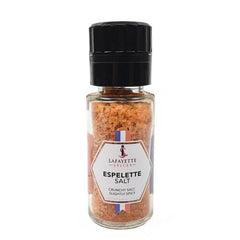 |
Order Now |
| Herbes de Provence Salt |
Flavor: Crunchy Salt, Savory, Oregano, Thyme, Marjoram, and Rosemary Use: Roasted Chicken, Pork, Root Vegetables, Seafood |
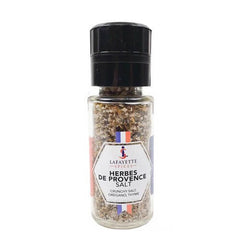 |
Order Now |
| Pink Himalayan Salt with Roses |
Flavor: Crunchy and Floral Use: Game Meats, Seafood, Cocktails, Desserts |
 |
Order Now |
| Celery Salt |
Flavor: Crunchy Salt, Intense Celery Use: Seafood, Poultry, Soups, Sauces, Cocktail |
 |
Order Now |
| Scandinavian Salt |
Flavor: Smoky Salt Crystals, Cumin, Onion Use: Soups, Sauces, Meats, Seafood |
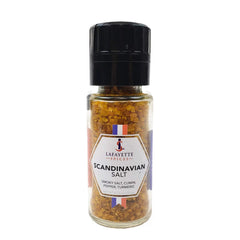 |
Order Now |
| Madras Curry Powder |
Flavor: Slightly spicy curry flavor Use: Meat, Seafood, Snack |
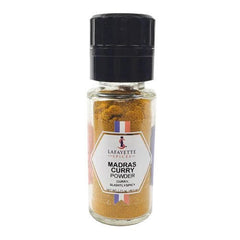 |
Order Now |
We'll chat about these magical, quirky substitutes for Herbs de Provence in a bit. It's a culinary story you won't want to miss. Stay tuned, my flavor aficionado!!!
Are Herbs de Provence healthy?
Herbes de Provence can be a healthy addition to your cooking when used in moderation. Here are some considerations regarding their health benefits:
Nutrient Content:
Herbes de Provence contains various vitamins, minerals, and antioxidants present in the constituent herbs. For example, thyme and rosemary are rich in vitamin C and vitamin A. While oregano is known for its high antioxidant content. These herbs can add some nutritional value to your meals.
Flavor Enhancement:
Using Herbes de Provence can enhance the flavor of your dishes without the need for excessive salt, sugar, or unhealthy fats. This can be beneficial for those looking to reduce their sodium intake.
Potential Health Benefits:
Many of the herbs in Herbes de Provence have been associated with potential health benefits. For example, rosemary has been linked to improved digestion. Thyme has antimicrobial properties. And oregano is known for its antioxidants.
While the amounts used in cooking may not provide therapeutic doses, they can still contribute to your overall diet.
Lower Calorie Option:
Herbes de Provence is low in calories. Making them a great choice for flavoring dishes without significantly increasing your calorie intake.
Potential for Reducing Sodium:
By using Herbes de Provence as a seasoning, you can reduce your reliance on high-sodium flavor enhancers like salt and processed condiments, which may be helpful for those monitoring their sodium intake.
However, it's essential to use Herbes de Provence in moderation. As excessive use of any seasoning can overwhelm the flavors of your dishes. Or potentially lead to digestive discomfort.
Additionally, if you have specific dietary restrictions or health concerns, it's advisable to consult with a healthcare professional or registered dietitian. To ensure that using Herbes de Provence aligns with your dietary goals and needs.
What is the difference between Herb de Provence and Italian seasoning?
Italian Herbs and Herbes de Provence are both herb blends used in cooking. But they have different compositions and origins, which result in distinct flavor profiles:
Italian Herbs:
Composition:
Italian herbs typically include a combination of herbs commonly used in Italian cuisine. These may include basil, oregano, thyme, rosemary, and sometimes marjoram and sage. The blend can vary. But it usually includes herbs with a Mediterranean influence.
Flavor Profile:
Italian herb blends have a savory, earthy, and aromatic flavor with hints of Mediterranean and Mediterranean-inspired dishes. They are often associated with Italian pasta sauces, pizza, and other Italian dishes.
Herbes de Provence:
Composition:
Herbes de Provence is a blend of herbs that originates from the Provence region in southeastern France. The traditional blend includes herbs like thyme, rosemary, oregano, marjoram, and savory.
Flavor Profile:
Herbes de Provence has a fragrant, slightly sweet, and savory flavor profile. It is commonly used in French cuisine and pairs well with roasted meats, grilled vegetables, and Mediterranean dishes.
In summary, the key differences between Italian herbs and Herbes de Provence lie in their composition and flavor profiles.
Italian herbs are a blend of herbs typically used in Italian cooking. While herbes de Provence is a French herb blend originating from the Provence region of France. These differences can influence the types of dishes they are best suited for.
What can be substituted for Herbes de Provence?
Whether you've run out of this classic herb blend. Or want to experiment with new flavors, we've got you covered. In this article, we'll explore a range of creative alternatives. From Crazy Salt to Pink Himalayan Salt with Roses, and even Madras Curry Powder.
Discover how this Herbes de Provence substitute can add unique and exciting dimensions to your dishes.
Whether you're in a pinch or simply looking to spice things up in the kitchen. Read on to find the perfect Herbes de Provence replacement for your culinary adventures.
Crazy Salt:
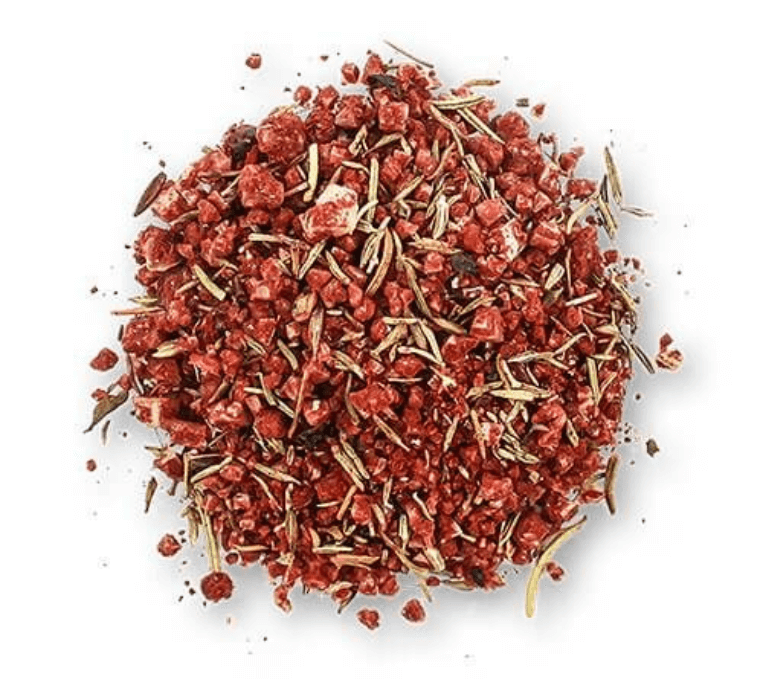
Ingredients:
Crazy Salt is a versatile seasoning blend that typically includes a mixture of salt, herbs, and spices.
Flavor Profile:
It offers a well-rounded and savory flavor with herbal notes. The specific ingredients can vary, but they often contain elements. Like paprika, pink peppercorn, black peppercorn, chili, cumin, thyme, coriander, and rosemary.
Culinary Uses:
Crazy Salt is excellent for enhancing the flavor of a wide range of dishes. Including roasted meats, seafood, grilled vegetables, soups, stews, and pasta sauces.
It provides a balanced blend of seasonings. And that can be used as a Herbes de Provence substitute when you want a more intense and flavorful option.
Espelette Pepper Salt:

Ingredients:
Espelette Pepper Salt combines Spanish salt with dried Espelette peppers.
Flavor Profile:
It offers a sweet smoky and mildly spicy flavor with fruity undertones. The heat level is relatively mild. Making it suitable for those who enjoy a touch of spice without overwhelming heat.
Culinary Uses:
Espelette Pepper Salt is particularly well-suited for grilled meats, seafood, and roasted vegetables. Even as a finishing touch on dishes like fries or popcorn. It provides a unique twist on Herbes de Provence, adding a subtle kick and smokiness.
Herbes de Provence Salt:

Ingredients:
Herbes de Provence Salt combines the classic Provence spice herb blend with salt.
Flavor Profile:
It offers the familiar herbal flavors of thyme, rosemary, marjoram, and savory combined with the Guérande salt. The result is a well-balanced seasoning with a Mediterranean flair.
Culinary Uses:
This salt blend is a convenient way to infuse your dishes with the essence of Herbes de Provence. Use it as a direct substitute in recipes that call for Herbes de Provence to impart the same herbal and aromatic notes with added saltiness.
Pink Himalayan Salt with Roses:
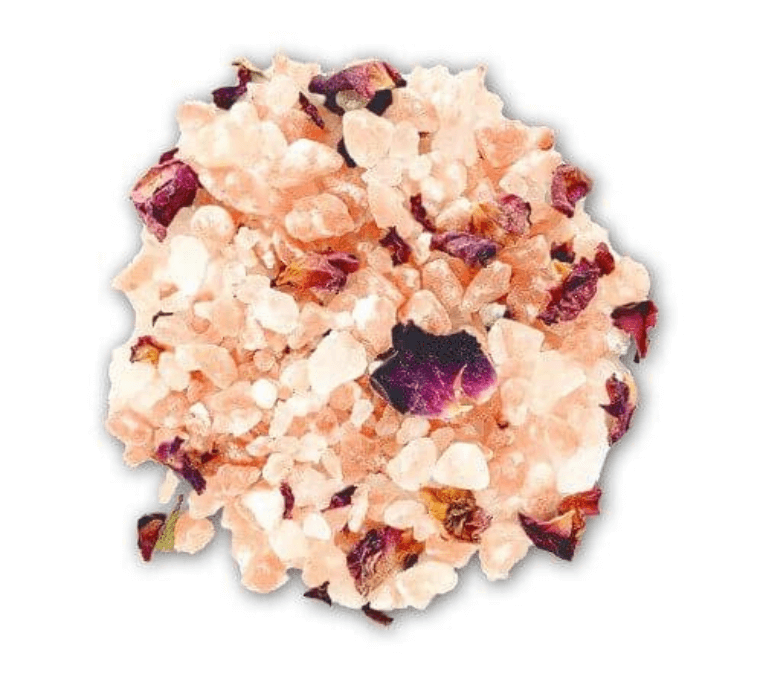
Ingredients:
Pink Himalayan Salt is sourced from ancient salt mines and is rich in minerals. When infused with dried rose petals, it creates a unique seasoning.
Flavor Profile:
This seasoning offers a delicate and floral flavor with subtle hints of rose. The salt's natural minerality complements the floral notes, creating a well-rounded taste.
Culinary Uses:
While not a direct provence spice substitute. Pink Himalayan Salt with Roses can add an elegant and floral touch to dishes. It's often used as a finishing salt on salads, desserts, and dishes where a subtle floral note would be appreciated.
Celery Salt:
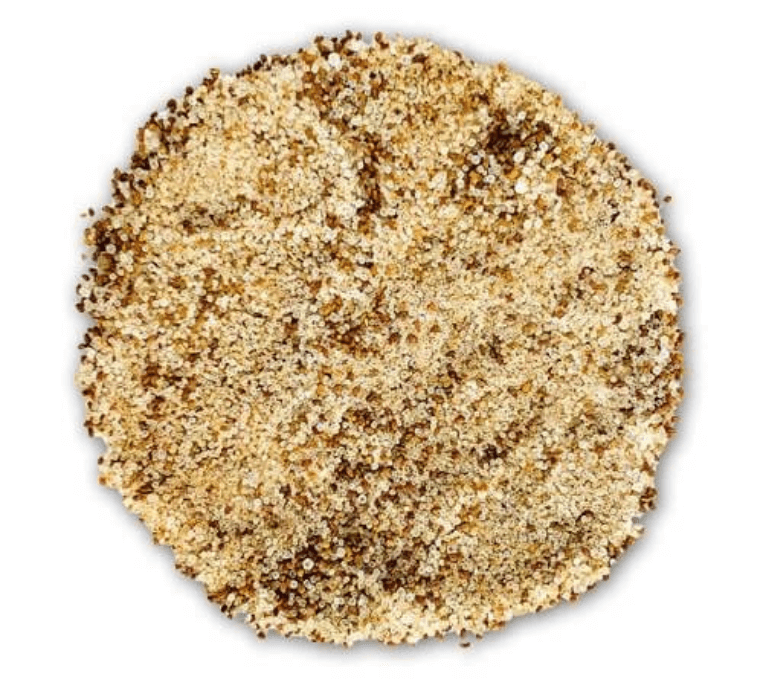
Ingredients:
Celery salt is a blend of ground celery seeds and salt.
Flavor Profile:
It has a savory, earthy flavor reminiscent of celery, with a hint of saltiness. The celery seed imparts a unique herbal quality.
Culinary Uses:
Celery salt is commonly used in American cuisine. Especially in dishes like potato salad, coleslaw, and Bloody Mary cocktails.
While it differs from French herbs. It can add a savory and herbal dimension to various recipes.
Scandinavian Salt:
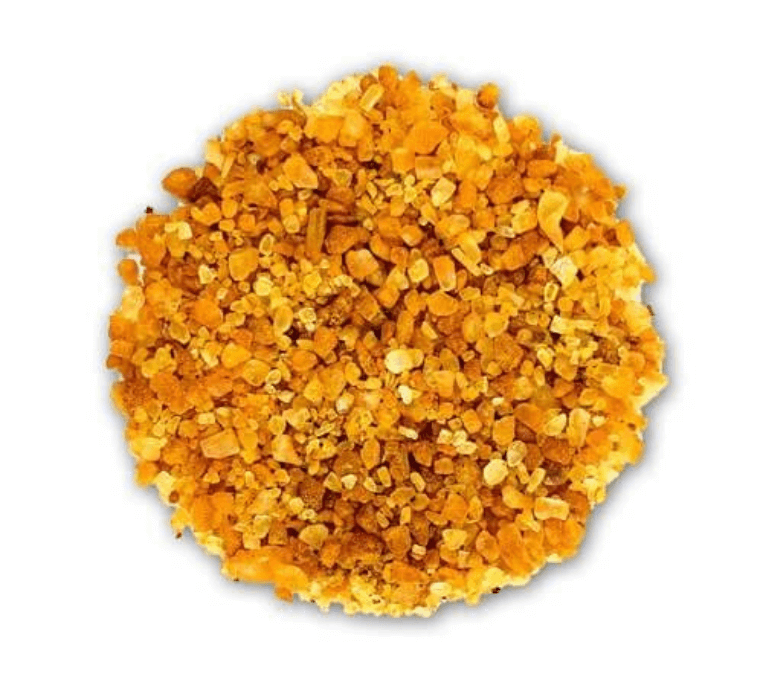
Ingredients:
Scandinavian Salt typically includes sea salt combined with a variety of herbs and spices used in Scandinavian cooking.
Flavor Profile:
It offers a complex flavor profile with cumin, onion, and smoky notes. Common ingredients include clove, onion, pepper, nutmeg, coriander, and ginger.
Culinary Uses:
Scandinavian Salt can be used to infuse dishes with Nordic-inspired flavors. It pairs well with seafood, and dishes featuring potatoes or root vegetables. It's not a direct substitute for Parisian herbs but offers a unique regional twist.
Madras Curry Powder:

Ingredients:
Madras Curry Powder is a spice blend originating from India. Typically includes ground spices like coriander, cumin, fennel, salt, turmeric, and fenugreek.
Flavor Profile:
It delivers a bold, aromatic, and moderately spicy flavor with layers of complexity from the various spices. The level of heat can vary depending on the blend.
Culinary Uses:
While distinct from Provence spice, Madras Curry Powder can be used to introduce rich and spicy flavors to your dishes. It's commonly used in Indian and South Asian cuisine. Including curries, soups, stews, and marinades, adding depth and warmth to your recipes.
What are the Herbes de Provence uses?
All this talk about the blend – but what the heck do you do with it?!
Herbes de Provence is best when cooked with. Cooking softens the rough leaves and allows the natural oils and aromas to come out.
You can use it as a raw ingredient, but it’s best to blend it into a fine powder before doing so. This can be achieved in a blender or spice grinder.
The raw ground herb blend would make an excellent flavor addition to a fresh salad dressing or even a sprinkling over a plated pasta dish. But where the Herbes de Provence blend really shines, is when it’s roasted – whether on meat, seafood, or vegetables.
Rubbing a generous pinch over chicken, pork loin, beef roast, whole fish, or carrots before roasting is your ticket straight to the aromatic shores of France. The herbs open up and soften in the roasting fats and become something truly magical.
Enjoy this beautiful blend, it’s one of our favorites and we’re certain it will quickly become yours too.
Trying out our new spices in recipes.
Herbs de Provence Recipe
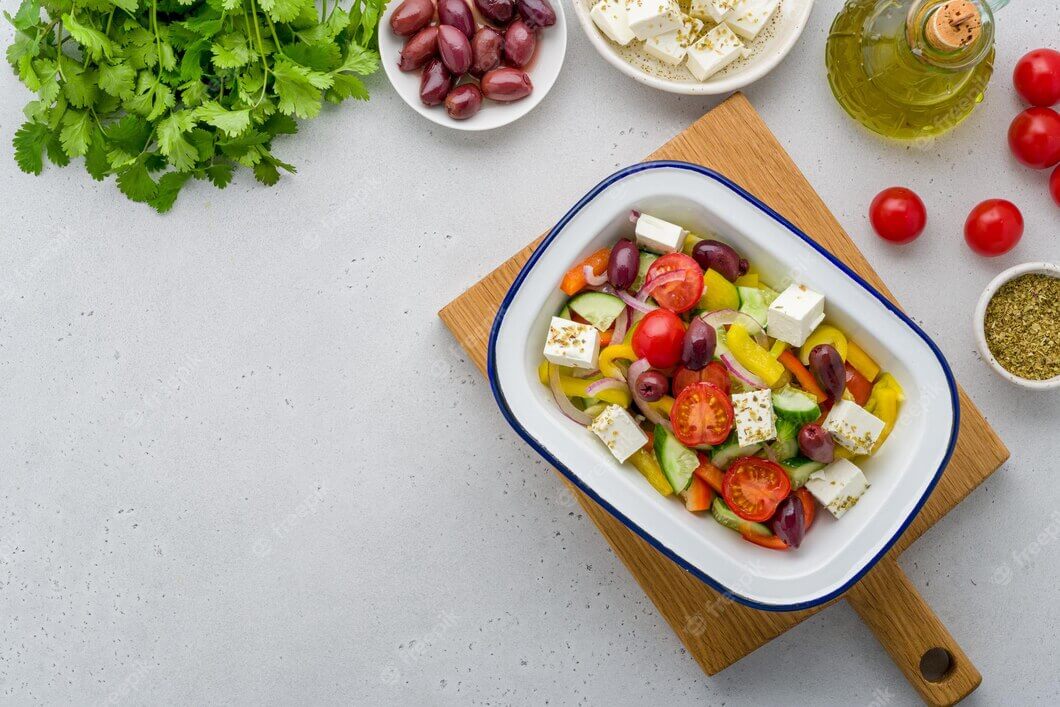
This aromatic blend of dried herbs promises to elevate your culinary creations to new heights. With its rich history and tantalizing flavor profile, it takes your taste buds to the sun-soaked shores of southern France.
Beef Stew Infused with Provencal Charm
Crafting a perfect stew is an art that demands patience. The careful layering of ingredients, each added in the right order. And a leisurely cooking process is the secret to success. It may take some time, but the results are well worth it. And thanks to the magic of Parisian herbs, as it infuses the dish with its aromatic charm.
Herbes de Provence with Persian Blue Salt
This dynamic duo brings a burst of flavor to winter cooking that's truly unparalleled.
Imagine the bright, herbaceous notes of dried rosemary and thyme dancing in harmony with the bold and intense character of Persian Blue Salt. The result is a culinary symphony that's perfect for creating a delightful wintery weeknight dish. Such as Chicken Breast Roasted with Parisian herbs alongside Blue Persian Salt. It can be served with a Warm Pear- Radicchio Salad.
Julia Child Herbes de Provence recipe
Julia Child, the renowned chef and cookbook author, introduced many to the flavors of French cuisine. She knew the secret to creating exceptional dishes lay in the art of seasoning. Her Herbes de Provence recipe is a delightful addition to any kitchen.
For those seeking to replicate her culinary magic, Lafayette Spices offers a premium Herbes de Provence blend that's worthy of her praise.
Why Choose Lafayette Spices Herbes de Provence?
Exceptional Quality:
Julia Child insisted on the finest ingredients, and so do we. Lafayette Spices' Herbes de Provence is crafted from premium herbs and spices. Ensuring the utmost in quality and flavor.
Authentic Flavor:
Our Parisian herbs capture the essence of the Provence region just like Julia Child's own recipe. Each herb is carefully selected and blended to deliver an authentic taste experience.
Convenience:
We understand the importance of convenience in the kitchen. By choosing Lafayette Spices Herbes de Provence, you save time while enjoying the same impeccable flavor profile.
Culinary Versatility:
Whether you're roasting poultry, grilling vegetables, or simmering a hearty stew, Lafayette Spices Herbes de Provence will be your go-to seasoning. Just as it was for the Culinary Legend Julia Child.
How to Buy Lafayette Spices Herbes de Provence?
Visit our online store today to order your Lafayette Spices Herbes de Provence. With just a few clicks, you can have this culinary masterpiece delivered to your doorstep. Ready to infuse your dishes with the essence of Provence that Julia Child herself would have celebrated?
Elevate your cooking to a level that would make Julia Child proud. Choose Lafayette Spices Herbes de Provence and savor the extraordinary flavors that have stood the test of time. Bon appétit!
Conclusion
We have embarked on a flavorful journey to discover the magic of Herbes de Provence. From its rich history and versatile uses, this aromatic blend of herbs is necessary to our kitchens.
For those seeking a convenient and high-quality option, Lafayette Spices is the one. They have the blend worthy of the most discerning chefs, capturing the authentic essence of this beloved mix herbs.
And if you ever find yourself without Herbes de Provence, we've explored suitable substitutes that can come to your culinary rescue.
Let its aromatic bouquet infuse your creations with warmth and flavor.
With the knowledge of its uses. Delightful recipes. Suitable substitutes. And the option to acquire it easily. Your culinary adventures will be enriched by this timeless spice blend. Let your taste buds revel in Herbes de Provence's charm.





